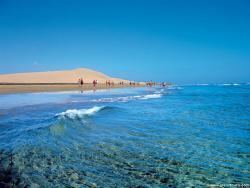Local time Tuesday 4:51 PM | Postal code 35100 Population 36,065 (2013) | |
 | ||
Weather 19°C, Wind N at 37 km/h, 52% Humidity Points of interest Palmitos Park, Playa del Inglés, Maspalomas Lighthouse, Holiday World Maspalomas, Gran Casino Costa Me | ||
Gran canaria travel video las palmas playa del ingles maspalomas
Maspalomas (/ˌmɑːspəˈlɒməs/, [maspaˈlomas], [mahpaˈlomah]) is a tourist town in the south of the island of Gran Canaria, Canary Islands, stretching from Bahía Feliz in the east to Meloneras in the west, including the resort towns of San Agustín and Playa del Inglés. Maspalomas constitutes the southernmost part of the municipality of San Bartolomé de Tirajana.
Contents
- Gran canaria travel video las palmas playa del ingles maspalomas
- Map of 35100 Maspalomas Las Palmas Spain
- Exploring gran canaria canary islands beautiful maspalomas beach
- Overview
- References
Map of 35100 Maspalomas, Las Palmas, Spain
Exploring gran canaria canary islands beautiful maspalomas beach
Overview
Before the era of tourism, Maspalomas was the name of a hamlet in what today is San Fernando de Maspalomas. Its name may derive from that of Rodrigo Mas de Palomar, a settler and soldier from Majorca, or from Francisco Palomar, a Genoese friend of Alonso Fernandez de Lugo who purchased 87 Guanche slaves from Güímar and settled in the area.
Present-day Maspalomas is the result of an ambitious development project, organized in the form of an International Ideas Contest (opened to any member of the International Union of Architects), held in 1961 under the auspice of Alejandro del Castillo, owner and promoter of most of the space under construction. The contest was won by the French office SETAP (including the urbanist Guy Lagneau and the economist Michel Weill) and covered the 1,060 hectares (2,600 acres) and 19 kilometres (12 mi) of coast that constitute the core area of Maspalomas - Costa Canaria. The contest paved the way for a particular way of understanding "touristic" urbanism that served as model for later tourists developments in other Canary Islands.
Unlike the resort-like development model later extended to other locations in the Canary Islands and the Caribbean, Maspalomas has a personality on its own, as it evolved into a fully equipped town much closer to the "touristic" concept of destinations like Palm Springs, California or Palm Beach, Florida. It has a variety of infrastructure and public institutions rarely seen in other touristic areas, including private clinics and two hospitals, local and foreign schooling institutions (Spanish, English and Swedish schools), shopping & convention centres, two casinos, English-language cinema, golf courses, sports centers, thematic parks and a Summer University (in collaboration with the university of Las Palmas de Gran Canaria, mainly focused on tourism-related activities).
Maspalomas serves as the base for Gran Canaria's only English language newspaper, which serves a print readership in excess of 20,000 every month and reaches up to another 30,000 readers on-line.
It has a wide range of accommodation on offer, although the urbanism concept speaks of an horizontal expansion (Bungalows) rather than high rises.
The area includes the Natural Reserve of the Dunes of Maspalomas, which constitutes an important landmark of Gran Canaria. Much appreciated as a winter destination for foreign tourists, mostly from north-European countries (Sweden, Norway, Germany, Netherlands, etc.), it remains as the largest tourist destination in the Canary Islands and a worldwide-known destination for LGBT tourism.
There is a 56-metre-high (184 ft) lighthouse, named El Faro de Maspalomas, at the southern point of the resort from where the 12 kilometres (7.5 mi) long beach and Maspalomas Dunes, a nature reserve since 1897, lead to Playa del Inglés.
In the north of Maspalomas San Fernando and El Tablero were built for people working in the tourist industry. In between Sonnenland was constructed, on a crest, to accommodate expats.
In September 2012, the World Tourism Organisation organized its World Tourism Day in Maspalomas, as a form of commemoration of its 50 years of existence.
